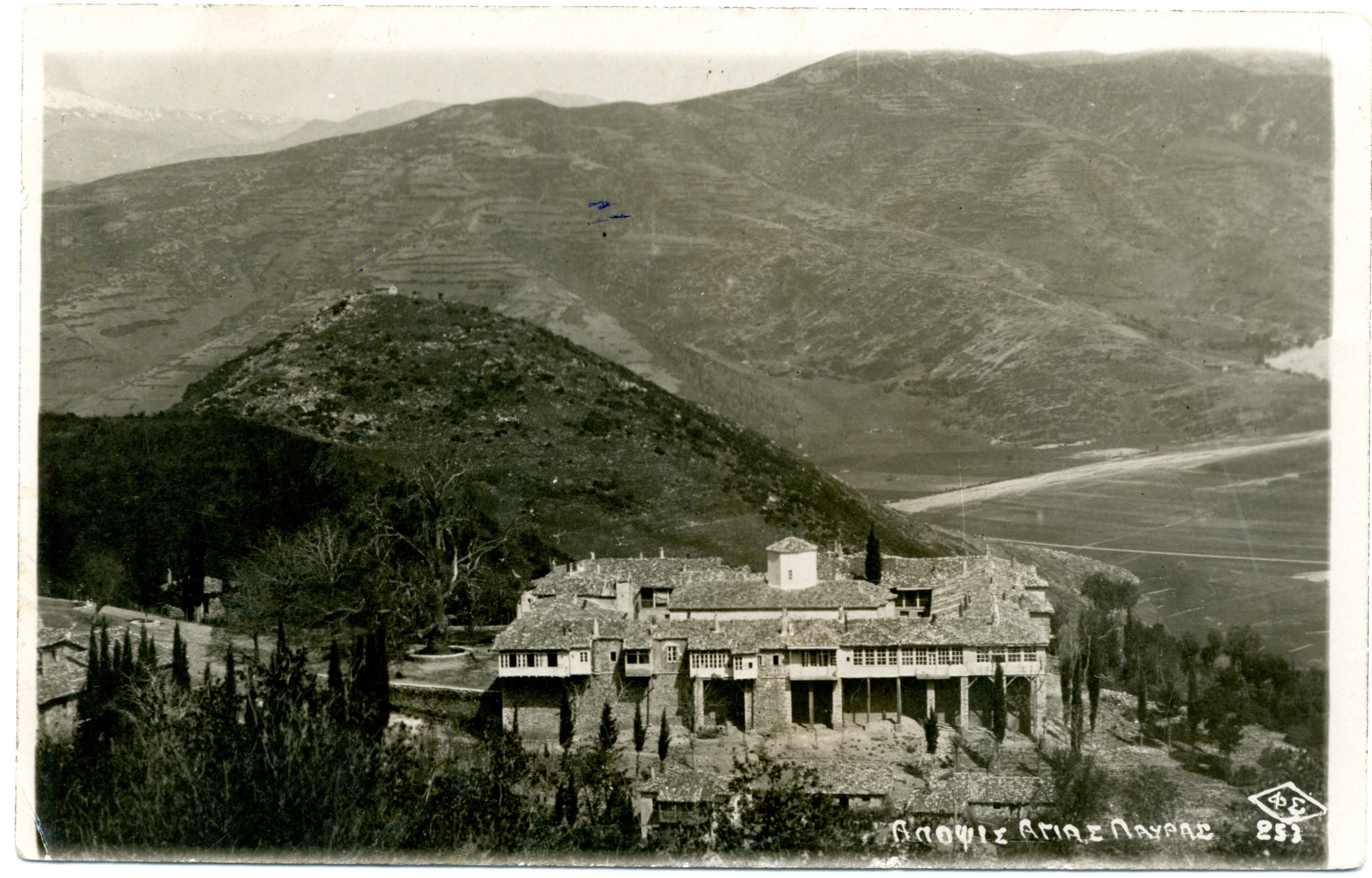
4/29/2025 10:12:57 AM
The Monastery of Agia Lavra, Kalavryta
The Monastery of Agia Lavra was founded in 961 by Eugenios, a disciple of Saint Athanasius the Athonite. Its original location was 300 meters southwest of its present site, at a place known as "Palaeomonastiro" (Old Monastery), where the first catholicon (main church) of the monastery remains. This church is a two-aisled cross-vaulted temple built at the entrance of a cave and is decorated with two rows of frescoes. The first monastery was completely destroyed by a fire in 1585. In 1689, the monastery was relocated to its current position. The new catholicon was built in a three-aisled, Athonite style, domed church (single-nave, with a dome unsupported by columns). The monastery suffered hardships in 1715, particularly during the Orlov Revolt, and later faced further destruction. In 1826, Ibrahim Pasha set the monastery on fire, but the monks had managed to evacuate, taking with them many precious relics and artifacts. The monastery was reconstructed in 1828, with the establishment of a new catholicon (the third one), built in the basilica style with a dome. However, it was severely damaged by an earthquake in 1844 and had to be rebuilt again in 1850. On December 14, 1943, the monastery was set on fire again, and the German forces executed those monks who had not escaped. The monastery was restored in 1950 to its present form. The monastery remains a symbol of resilience and a site of great historical and religious importance, especially for its role in the Greek War of Independence and its connection to significant moments in modern Greek history. Pictured: A postcard depicting the Monastery of Agia Lavra, Kalavryta, before World War II. ©Municipal Museum of the Kalavryta Holocaust.

